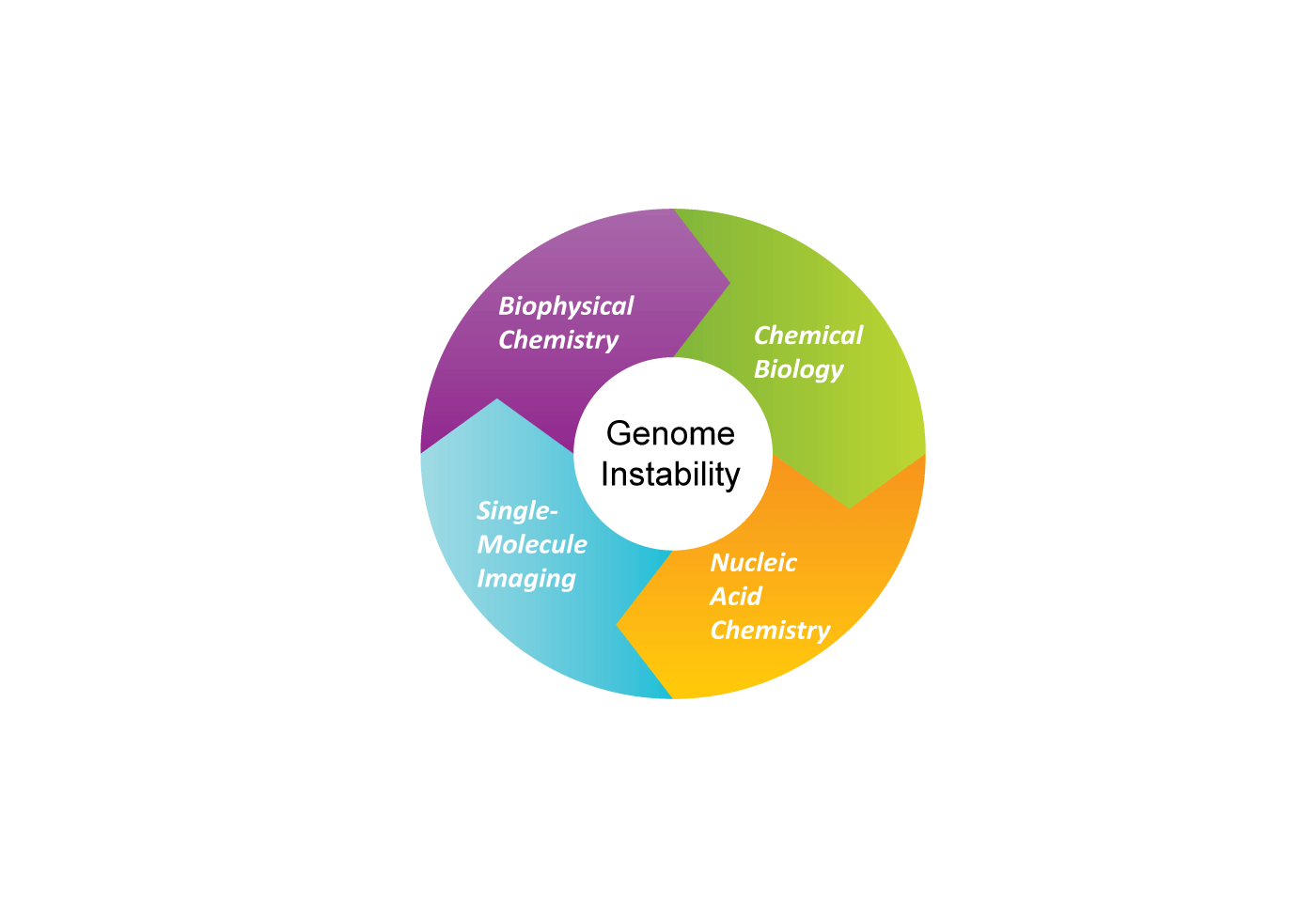RESEARCH INTERSECTIONS
The Gahlon research group bridges the fields of biophysical chemistry and chemical biology to understand mechanisms of genome instability. We leverage single-molecule imaging and nucleic acid chemistry to visualize and characterize protein-nucleic acid interactions. Collectively, our multidisciplinary research combines ensemble and single-molecule studies to gain a holistic understanding of the molecular interactions that contribute to human disease.

RESEARCH AREAS

MITOCHONDRIAL GENOME INSTABILITY
The ultraviolet component of natural sunlight damages cellular DNA directly by reacting with nucleobases or indirectly by generating reactive oxygen species (ROS) that oxidize DNA. Several mechanisms safeguard nuclear DNA from the formation and persistence of these DNA lesions, including DNA repair pathways. Conversely, high mutational rates have been observed for mitochondrial DNA (mtDNA), which is devoid of protective histones and is repaired less efficiently. While mtDNA mutations are tightly associated with ROS-induced oxidative damage, how UV radiation directly contributes to damaging the mitochondrial genome remains to be elucidated. The goal of our research is to study how alterations in the mtDNA are linked to aging and to human pathologies such as cancer, myopathies and neurodegeneration. To this end, we are applying molecular biology techniques and microscopy-based readouts to monitor, in real time, the generation of UV-light-induced mutations within the mtDNA. By dissecting the molecular mechanisms underlying the generation of these genetic lesions, our findings will help in understanding cancer etiology and discovering biomarkers for human disease prevention.

SINGLE-MOLECULE PROTEIN DYNAMICS
DNA polymerases (DNA Pols) are responsible for faithfully duplicating DNA and errors in this process can establish mutations. DNA Pols have complex kinetic pathways that consist of multiple conformational states. The goal of this research is to study how single DNA polymerase enzymes perform DNA replication. In order to do this, we develop single-molecule FRET assays where we can visualize single DNA polymerase enzymes function in real time. For example, we can monitor the kinetics and conformational dynamics during polymerase binding, slippage and proofreading. We can further modify the system to study how binding changes as a function of the type of error in the DNA template or by adding/removing accessory proteins that interact with the DNA polymerase. Understanding protein-nucleic acid dynamics on a single-molecule level is important to unravel key intermediates that are otherwise lost in ensemble level experiments. It is our hope that this work will shift the knowledge frontier by advancing our understanding of lesion bypass during DNA replication in order to better realize the relationship between DNA mutations and the development of human diseases like cancer.

MECHANISMS OF DRUG RESISTANCE
Platinum-based chemotherapeutic agents are used to treat a diverse range of cancer types. After activation in the cell, these drugs covalently bind to DNA to form DNA adducts that evoke cell death in cancerous cells. Over time cancer cells can develop tolerance to DNA adducts, leading to drug resistance. One strategy to combat this resistance is to inhibit the enzymes involved in the tolerance of these DNA adducts during DNA replication. Human DNA polymerases hPol η, hPol ζ and hPol κ participate in translesion DNA synthesis (TLS) past platinum-derived DNA adducts. The inhibition of TLS DNA polymerases provides a strategy to mitigate resistance resulting from platinum-based chemotherapy. The goal of this work is to gain mechanistic insight into how TLS polymerases replicate past platinum-based adducts. In addition, we are designing and synthesizing small molecule TLS polymerase inhibitors and evaluating their inhibitory efficacy in biochemical and cytotoxicity assays. Overall, this work will contribute to understanding DNA adduct tolerance mechanisms involved in platinum-based drug resistance.


